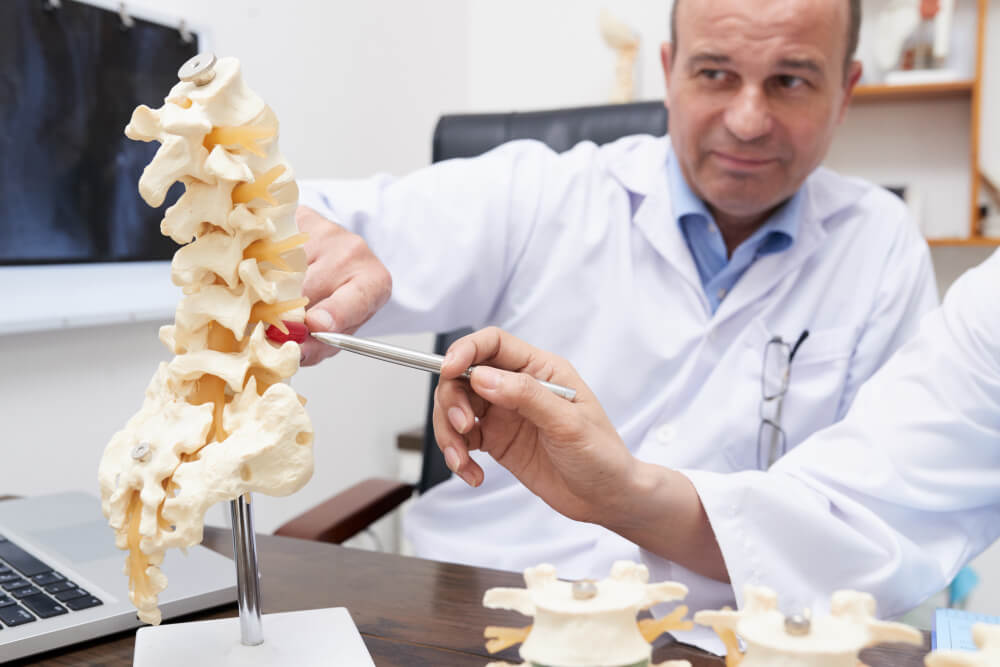Fractured Vertebrae: Healing, Treatment & Recovery Options
Back pain. It’s a common complaint, but sometimes that pain can be a sign of something more serious, like a fractured vertebra. While the thought of a cracked bone in your spine can be alarming, it’s important to stay calm and seek medical attention. With proper diagnosis and treatment, most fractured vertebrae heal well.
This guide delves into the world of fractured vertebrae, exploring their causes, symptoms, and most importantly, the path to healing and recovery. We’ll discuss the various treatment options available, from rest and bracing to surgery, and provide tips on managing pain and promoting a full recovery. We’ll also address long-term management strategies to help you live well after a vertebral fracture.
Understanding Fractured Vertebrae: Causes and Symptoms
The vertebrae are the bones that make up your spine, providing structure, support, and protection for your spinal cord and nerves. A fractured vertebra occurs when one of these bones breaks or cracks.
Causes of Fractured Vertebrae:
- Trauma: This is the most common cause, often resulting from a car accident, fall from a height, or sports injury.
- Osteoporosis: This condition weakens bones, making them more susceptible to fractures, even from minor falls or bumps.
- Cancer: Tumors in the spine can weaken the vertebrae.
- Compression fractures: These often occur in the lower spine due to osteoporosis or repetitive stress.
Symptoms of a Fractured Vertebrae:
- Pain: This is the most common symptom, often located in the area of the fracture and worsening with movement.
- Tenderness: The area around the fracture might be sensitive to touch.
- Muscle spasms: The muscles around the fracture may spasm in an attempt to stabilize the area, causing additional pain.
- Loss of mobility: Depending on the severity of the fracture and location, there might be a decrease in your ability to move or bend your spine.
- Neurological symptoms: In some cases, a fractured vertebra can compress the spinal cord or nerves, leading to numbness, tingling, weakness, or even bowel or bladder problems.
Red Flags: If you experience any of the following warning signs in addition to back pain, seek immediate medical attention:
- Severe pain that worsens or doesn’t improve with rest
- Numbness or weakness that spreads or worsens, especially in your legs
- Difficulty controlling your bowels or bladder
- Loss of balance or coordination
- Difficulty walking
Diagnosis and Treatment Options for Fractured Vertebrae
If you suspect a fractured vertebra, your doctor will likely perform a physical examination and order imaging tests like X-rays, CT scans, or MRIs. These tests can help determine the location and severity of the fracture.
Treatment for fractured vertebrae depends on several factors, including:
- Severity of the fracture: A small, stable fracture might require a different approach than a more serious fracture that disrupts spinal alignment.
- Location of the fracture: Fractures in the lower spine (lumbar vertebrae) might be treated differently than those in the upper spine (thoracic vertebrae) or neck (cervical vertebrae).
- Presence of neurological symptoms: If the fracture is compressing the spinal cord or nerves, it might require a more urgent intervention.
Here’s an overview of some common treatment options:
- Rest: This is essential to allow the fracture to heal. Your doctor may recommend wearing a brace to limit movement and provide support.
- Medication: Pain relievers and muscle relaxants can help manage discomfort.
- Physical therapy: After the initial healing phase, physical therapy exercises can help regain strength, flexibility, and improve posture.
- Vertebral augmentation: This minimally invasive procedure involves injecting bone cement into the fractured vertebra to provide stability.
- Surgery: In some cases, surgery might be necessary to realign the vertebrae or remove fragments of bone that are compressing nerves.
Promoting Healing and Recovery from a Spinal Fracture
Following your doctor’s treatment plan is crucial for a full and successful recovery from a fractured vertebra. Here are some additional tips to promote healing:
- Pain Management: Work with your doctor on a pain management plan that might include medication, physical therapy, and relaxation techniques.
- Physical Therapy: Regular physical therapy sessions can help strengthen your core muscles, improve your flexibility, and prevent future injuries.
- Healthy Diet: Eating a diet rich in calcium and vitamin D can help support bone health and promote healing.
- Maintain a Healthy Weight: Excess weight puts additional stress on your spine, so maintaining a healthy weight can be beneficial for recovery.
- Smoking Cessation: Smoking can impede bone healing, so quitting smoking is crucial for optimal recovery.


